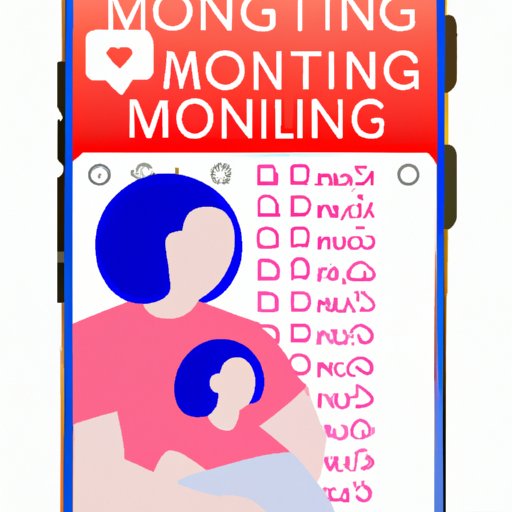Introduction
Parental monitoring is the act of tracking children’s internet activities and using software or hardware tools to control their access. As technology advances and more kids have access to smartphones and tablets, parental monitoring has become increasingly important. In this article, we’ll explore how to monitor your kid’s iPhone and keep them safe while they explore the digital world.

Install a Parental Monitoring App
Installing a parental monitoring app is one of the best ways to keep track of your child’s phone use. These apps allow you to set content restrictions, time limits, and even monitor text messages and calls. They also provide detailed reports on your child’s activity, so you can easily spot any suspicious behavior.
The benefits of using an app are numerous. Not only do they provide comprehensive monitoring capabilities, but they also give you peace of mind knowing that your child is safe online. Plus, these apps are often free or very affordable, making them an attractive option for budget-conscious parents.
When choosing a parental monitoring app, it’s important to consider the features it offers. Look for an app that allows you to set rules, block websites, and monitor text messages and calls. Also, make sure the app is compatible with the version of iOS your child’s iPhone is running.
Once you’ve chosen an app, the installation process is simple. All you need to do is download the app from the App Store and follow the instructions. You may need to enter your child’s Apple ID and password to complete the installation. Once it’s installed, you’ll be able to start monitoring your child’s phone use.
Use the iPhone’s Built-in Restrictions
The iPhone comes with built-in restrictions that allow you to limit your child’s access to certain apps, websites, and other content. To access these restrictions, open the Settings app and tap “Screen Time.” Here, you can set content restrictions, such as blocking inappropriate websites or preventing your child from downloading certain apps. You can also set time limits for specific apps, such as limiting the amount of time your child spends on social media.
These restrictions are easy to set up and can be customized to fit your child’s needs. They can also be changed at any time, so you can adjust the settings as your child grows older and needs more freedom.
Check Browsing History Regularly
Another way to monitor your child’s iPhone is to check their browsing history regularly. The Safari browser keeps a record of all websites your child visits, so you can easily see what they’re doing online.
To check your child’s browsing history, open the Safari app and tap the bookmarks icon. Then, tap “History” and scroll through the list of websites. If you see any websites that you don’t recognize or that you think are inappropriate, you can take steps to block them.
You should also look out for any signs of cyberbullying or other suspicious behavior. Pay attention to who your child is talking to online and what websites they’re visiting. If you notice anything unusual, address it with your child immediately.
Monitor Text Messages and Calls
Text messages and calls can reveal a lot about your child’s activities, so it’s important to monitor them regularly. With most parental monitoring apps, you can view your child’s text messages and call logs. This includes incoming and outgoing calls, as well as any messages sent through popular messaging platforms like iMessage and WhatsApp.
When reviewing your child’s text messages and call logs, look out for any signs of cyberbullying or inappropriate conversations. If you notice anything suspicious, talk to your child and take appropriate action.

Establish Rules for Appropriate Content
Finally, it’s important to establish ground rules for appropriate content. Talk to your child about the importance of being safe online and explain why certain types of content are inappropriate. Make sure they understand the consequences of posting inappropriate content or engaging in cyberbullying.
You should also teach your child about the dangers of sharing personal information online. Explain that they should never share their passwords, addresses, or other sensitive information on social media or other websites.
Conclusion
Monitoring your kid’s iPhone is an important part of keeping them safe online. By installing a parental monitoring app, setting restrictions on the iPhone, and checking browsing history and text messages, you can ensure your child is staying safe and behaving appropriately online. Additionally, it’s important to establish ground rules for appropriate content and teach your child about online safety.
By following these steps, you can rest assured that your child is safe when they’re online.


